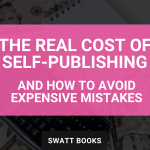Have you ever picked up a book, eager to dive in, only to be distracted by awkward spacing, inconsistent fonts, or clunky paragraph breaks?
Instead of immersing yourself in the story or information, you find yourself battling the formatting—flipping pages back and forth, trying to make sense of it all. Frustrating, right? That’s the power of Professional Book Formatting—or rather, the consequence of not investing in it.
Book formatting is more than just making text look pretty; it’s about ensuring a seamless, enjoyable reading experience. Whether you’re publishing in print or digital, the way your book is structured can mean the difference between rave reviews and a reader abandoning your work halfway through.
In this article, we’ll dive into why professional book formatting isn’t just an optional extra—it’s an essential step in creating a book that commands credibility, captivates readers, and stands the test of time.
Why Book Formatting Matters More Than You Think
As a business owner who has written a book, you’ve already taken a significant step toward establishing your authority, building your brand, and sharing your insights with the world. However, writing the book is only half the battle—how you present that content is just as important.
One of the most overlooked aspects of self-publishing is professional book formatting. While many authors focus on writing and marketing, poor formatting can ruin the reader experience, hurt credibility, and even impact sales.
A well-formatted book ensures:
✅ A professional and polished look
✅ An enjoyable and seamless reading experience
✅ Compliance with industry standards for print and digital platforms
In this guide, we’ll explore why professional book formatting is essential for business book success and how it impacts everything from first impressions to long-term sales.
First Impressions Matter
When a potential reader picks up your book—whether in print or digital format—the first impression determines whether they continue reading.
📖 Why It’s Important:
- A poorly formatted book instantly looks unprofessional, making readers doubt its credibility.
- Distracting formatting issues—such as inconsistent margins, odd spacing, or misaligned text—can frustrate readers.
- A clean, professional design enhances readability and engagement.
Example:
Imagine picking up a book with erratic spacing, different fonts on each page, and inconsistent alignment. Would you take it seriously? Probably not.
💡 Takeaway:
A book with professional formatting immediately signals quality and credibility, increasing the chances that readers will take your content seriously.
Consistency is Key
Nothing disrupts a reading experience more than inconsistent formatting. Whether it’s fonts, headers, paragraph spacing, or chapter breaks, consistency helps create a smooth, professional reading experience.
How Consistency Improves Readability:
✅ Clear headings and subheadings make navigation easy.
✅ Uniform paragraph structure keeps the text organized.
✅ Consistent use of fonts and spacing makes reading effortless.
💡 Pro Tip:
Establish a style guide for your book, ensuring uniformity in font sizes, headings, bullet points, and spacing.
Tailoring Formatting to Print and Digital Formats
Formatting a book isn’t one-size-fits-all—the requirements for print and digital books are completely different.
Print Formatting Considerations:
📌 Proper margins and gutter spacing for binding.
📌 Consistent line spacing and paragraph indentation for easy reading.
📌 High-quality images for clarity in print.
eBook Formatting Considerations:
📌 Clickable links for easy navigation.
📌 Reflowable text so readers can adjust font size and layout.
📌 Optimized design for various screen sizes and devices.
Example:
A business book on Amazon Kindle should allow text resizing and clickable links, whereas a print version needs properly aligned margins and structured chapters.
💡 Takeaway:
Understanding the unique formatting requirements for each format ensures a flawless reading experience for both print and digital audiences.
Reflecting Your Brand Through Formatting
Your business book is an extension of your brand. Just like your website, logo, and social media presence, your book’s formatting should reflect your brand’s professionalism and personality.
Ways to Align Formatting with Your Brand:
🎨 Branded Chapter Headings: Use a signature style or font for headings.
📖 Consistent Design Elements: Add subtle branding (e.g., colours, dividers, or icons).
🖋️ Professional Typography Choices: Select fonts that match your industry’s tone (e.g., modern sans-serif for tech books, classic serif for finance books).
💡 Pro Tip:
If your brand is minimalist and sleek, your book design should reflect that. If you have a bold and energetic brand, use formatting elements that enhance that vibe.
Enhancing Reader Experience
A well-formatted book makes reading enjoyable and effortless, which keeps readers engaged and prevents frustration.
How Formatting Improves Reader Experience:
✔️ Clear Navigation: Well-structured table of contents, headings, and chapter breaks make it easy to follow.
✔️ Reduced Eye Strain: Proper line spacing, font size, and paragraph breaks prevent fatigue.
✔️ Logical Flow: Thoughtfully formatted sections guide the reader smoothly through the book.
Example:
A book with long, unbroken paragraphs feels dense and overwhelming, while proper spacing and indentation make the content easy to digest.
💡 Takeaway:
Good formatting isn’t just about aesthetics—it enhances comprehension and keeps readers engaged.
Avoiding Common Formatting Pitfalls
Many self-published authors make avoidable formatting mistakes that can negatively impact book sales and reviews.
Common Mistakes:
🚫 Poor Justification: Inconsistent text alignment makes pages look messy.
🚫 Weird Line Breaks: Sentences splitting across pages disrupt readability.
🚫 Overuse of Fancy Fonts: Decorative fonts may look stylish but can be hard to read.
🚫 Inconsistent Margins: Uneven spacing creates a cluttered appearance.
Example:
Readers are likely to leave negative reviews if your book has distracting formatting issues, leading to lost credibility and sales.
💡 Pro Tip:
Always do a final formatting check before publishing, ensuring everything looks polished.
Complying with Publishing Standards
Each self-publishing platform—whether Amazon KDP, IngramSpark, or BookVault—has specific formatting guidelines.
Why Professional Formatting Helps:
✅ Avoids file rejection due to incorrect formatting.
✅ Ensures optimal printing quality for physical copies.
✅ Makes the ebook function properly across devices.
💡 Takeaway:
Hiring a professional formatter ensures your book meets all technical standards for seamless publishing.
Enhancing Accessibility for All Readers
Accessibility matters, especially for readers who rely on assistive technology.
How Professional Formatting Supports Accessibility:
🔹 Alt text for images in eBooks helps visually impaired readers.
🔹 Readable font choices improve comprehension for dyslexic readers.
🔹 Structured headings and spacing assist screen readers.
💡 Pro Tip:
Formatting your book with accessibility in mind ensures a wider reach and better inclusivity.
Saving Time by Hiring a Professional
Formatting a book yourself can be time-consuming and frustrating, especially if you’re unfamiliar with design tools.
Why Hiring a Formatter is Worth It:
✔️ Saves hours of work and frustration.
✔️ Ensures a polished and professional result.
✔️ Frees up your time to focus on marketing and sales.
💡 Takeaway:
Investing in professional formatting lets you focus on what you do best—growing your business and engaging your audience.
A Long-Term Investment for Ongoing Sales
A professionally formatted book has long-term value, as it continues to sell and attract readers for years to come.
Why It’s a Smart Investment:
✔️ Increased credibility leads to more referrals and reviews.
✔️ Better readability boosts reader retention and engagement.
✔️ Higher sales potential ensures consistent income over time.
💡 Final Thought:
Your book is an asset—investing in high-quality formatting ensures it serves you well for years to come.
Final Thoughts: Make Your Business Book Stand Out with Professional Formatting
Professional book formatting is not optional—it’s a critical step in self-publishing success.
📌 First impressions matter—poor formatting can ruin your book’s credibility.
📌 A smooth reader experience keeps people engaged and encourages sales.
📌 Proper formatting ensures compliance with publishing platforms.
📌 A well-designed book aligns with your brand and enhances your authority.
And it’s not just about aesthetics either—it’s about credibility, readability, and the long-term success of your book. No matter how valuable your content is, poor formatting can undermine your authority and drive readers away. On the other hand, a well-formatted book enhances the reading experience, aligns with your brand, and ensures your book meets industry standards.
If you’re serious about making an impact with your book, investing in professional formatting is a no-brainer. It’s the difference between a book that looks like an amateur DIY project and one that stands proudly alongside the bestsellers in your genre.
Ready to Publish? Let’s Make Your Book Shine
If you have a finished manuscript and want a polished, professional book that meets industry standards, let’s talk. I specialize in helping business authors like you create books that look as good as they read. Book a free consultation today, and let’s get your book ready for publication.
Still Writing? Get Your Strategy in Place
If you’re still in the planning or writing phase, don’t leave your book’s success to chance. Download my Write Strategy Checklist—a step-by-step guide to help you navigate the book planning, writing, and publishing process with confidence.





